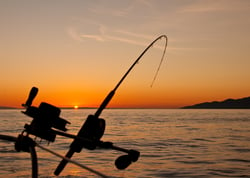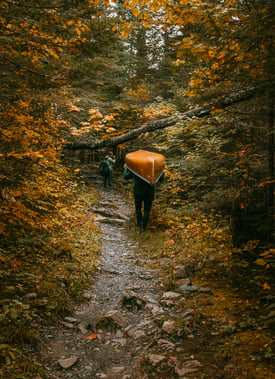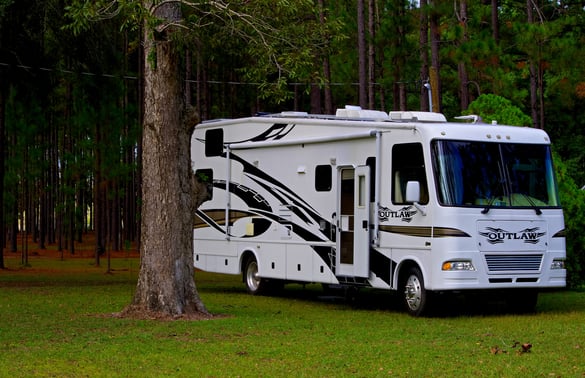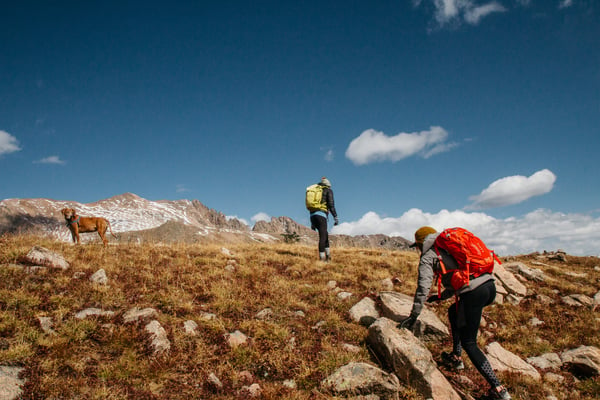 The demand for both close-to-home and regional outdoor recreation opportunities has never been higher. While that’s good news for the outdoor economy, it’s also putting pressure on an industry workforce that is already struggling with chronic skill-gaps and a retirement wave. By uniting around a new vision of workforce development, the outdoor recreation industry can capture the full opportunity of this moment, come into its own as a driver of positive social and environmental change, and lay the foundation for millions of sustainable, non-exportable, and rewarding jobs.
The demand for both close-to-home and regional outdoor recreation opportunities has never been higher. While that’s good news for the outdoor economy, it’s also putting pressure on an industry workforce that is already struggling with chronic skill-gaps and a retirement wave. By uniting around a new vision of workforce development, the outdoor recreation industry can capture the full opportunity of this moment, come into its own as a driver of positive social and environmental change, and lay the foundation for millions of sustainable, non-exportable, and rewarding jobs.
For all of the hardship that 2020 brought, the disruptions caused by the pandemic did have one silver lining: people went outside in record numbers.
I n Minnesota, as the Star-Tribune reports, the state’s Department of Natural Resources “sold 100,000 more fishing licenses than it did in 2019 and issued twice as many state forest camping permits. The declining sport of duck hunting experienced a rebound that no one could have foreseen, while all-terrain vehicle ridership surged to new levels. In the Boundary Waters Canoe Area, so many newcomers paddled their way into the wild that the U.S. Forest Service was forced to close an unusually high number of campsites where bears became accustomed to finding food.”
n Minnesota, as the Star-Tribune reports, the state’s Department of Natural Resources “sold 100,000 more fishing licenses than it did in 2019 and issued twice as many state forest camping permits. The declining sport of duck hunting experienced a rebound that no one could have foreseen, while all-terrain vehicle ridership surged to new levels. In the Boundary Waters Canoe Area, so many newcomers paddled their way into the wild that the U.S. Forest Service was forced to close an unusually high number of campsites where bears became accustomed to finding food.”
Minnesota was hardly alone, as first-time hikers merged with lifers on trails here in Oregon and nationwide and even the Points Guy got in on the action with a guide for first-time RV buyers.
All of this new enthusiasm is translating into a huge surge in demand for outdoor recreation products and services across the country, and while some of this demand spike may drop off after we get the pandemic under control, it’s a reasonable bet that many of these first-time hikers, hunters, campers, and anglers are now hooked for life.

Huge demand meets a workforce bottleneck
That’s great news for the outdoor industry, but the surge in outdoor recreation enthusiasm is putting a spotlight on the industry’s already significant workforce challenges. Simply put, there are not enough technically skilled workers to meet the demand. This skills gap is visible at ski resorts where technician shortages mean that only a portion of lifts are running. It’s visible in the backlog of orders for boat-builders and in the fact that even in a bike-obsessed city like Portland, it’s difficult to find a mechanic to work on carbon fiber bikes frames.
So, what’s driving this skills shortage? Some of it comes from the nature of the industry itself.
Taken as a whole, the outdoor industry represents more than 2.2% of the GDP—and that’s before the surge of 2020. That’s bigger than economic heavyweights like pharma and mining, but unlike those other industries, which are dominated by huge corporations, the outdoor industry is decentralized and small-business-driven.
 People start outdoor recreation businesses because they love the outdoors, and then they learn the business side of things as they go. This informal style is part of what makes jobs in the outdoors so appealing, but it also means that very little formal training or HR infrastructure has developed over the years. The result has been what Outside Magazine calls “hyper-networking”, where the lack of standards-based credentialing leads hiring managers to rely on employee networks, making it difficult to secure needed skills and creating real roadblocks for the many businesses seeking to build diverse teams. Add to these structural challenges the arrival of a “silver tsunami”: An entire generation of the skilled technicians who built the modern outdoor economy is preparing to retire, without the systems in place to ensure that their knowledge is transferred to a new generation.
People start outdoor recreation businesses because they love the outdoors, and then they learn the business side of things as they go. This informal style is part of what makes jobs in the outdoors so appealing, but it also means that very little formal training or HR infrastructure has developed over the years. The result has been what Outside Magazine calls “hyper-networking”, where the lack of standards-based credentialing leads hiring managers to rely on employee networks, making it difficult to secure needed skills and creating real roadblocks for the many businesses seeking to build diverse teams. Add to these structural challenges the arrival of a “silver tsunami”: An entire generation of the skilled technicians who built the modern outdoor economy is preparing to retire, without the systems in place to ensure that their knowledge is transferred to a new generation.
We’re at a crossroads. That’s a good thing.
So, the industry is at a crossroads. That sounds scary, but it’s actually an exciting opportunity, because by investing in thoughtfully developed, modern technical training—built by people who know how to create engaging online and offline educational experiences—the industry can become a major force for positive change at a time when that is sorely needed.
Think of it this way: this industry is hiring more than 150,000 people a year, which proportionally, is equivalent to saying that one kid in every K-12 classroom in America is likely to have a job in this industry at some point in their career.
Now imagine what could happen if we evolved from informal, ad-hoc technical and leadership training with nationally accessible standards-based workforce development programs built around a clear vision for what the industry represents. Imagine a workforce that understands the true diversity of their customer base, creating environments and experiences that are as welcoming to people of color, retirees, people with limited mobility and others as they are to seasoned outdoors people.
Imagine the possibilities for the industry if trainings were grounded in the triple bottom line—if, for example, learning about the history and ecology of mountain ecosystems was part of becoming a lift mechanic. Imagine those lift mechanics having clear pathways to build deeply satisfying careers out of what may begin as seasonal jobs.
We have an opportunity, right now, to help this unique industry maintain the decentralized, independent spirit that makes it so exciting even as we help build the training infrastructure that knits the industry together, allowing it to become more than the sum of its parts.
 In the next decade, somewhere between one and two million jobs will be created in the outdoors. These are the kinds of jobs that help people lead satisfying, deeply engaged lives. If we get this right, we can help ensure that those jobs go to a truly diverse, highly competent workforce, one that can help the industry come into its true potential as a bridge between people of all walks of life and meaningful experiences outdoors.
In the next decade, somewhere between one and two million jobs will be created in the outdoors. These are the kinds of jobs that help people lead satisfying, deeply engaged lives. If we get this right, we can help ensure that those jobs go to a truly diverse, highly competent workforce, one that can help the industry come into its true potential as a bridge between people of all walks of life and meaningful experiences outdoors.
That’s what we’re working on here at Oregon State University’s Outdoor Recreation Economy Initiative with our partners in federal agencies, industry leaders like the Outdoor Recreation Roundtable, and aligned educational institutions across the country . It’s a huge task, so it’s good that we’re not doing this alone. We’re part of a growing community of industry leaders and educators who see both the incredible challenge and opportunity of this moment.
If this sounds like something you want to help build, let’s talk.



